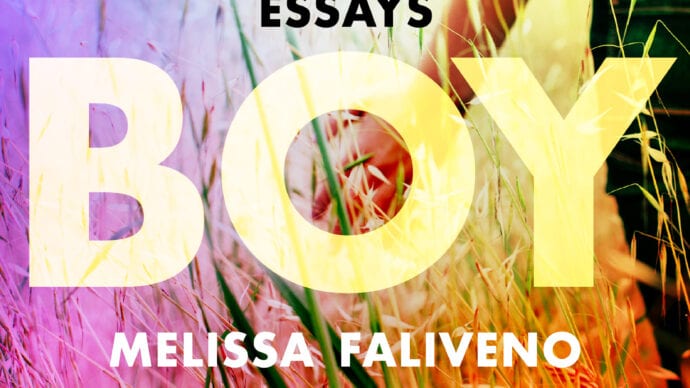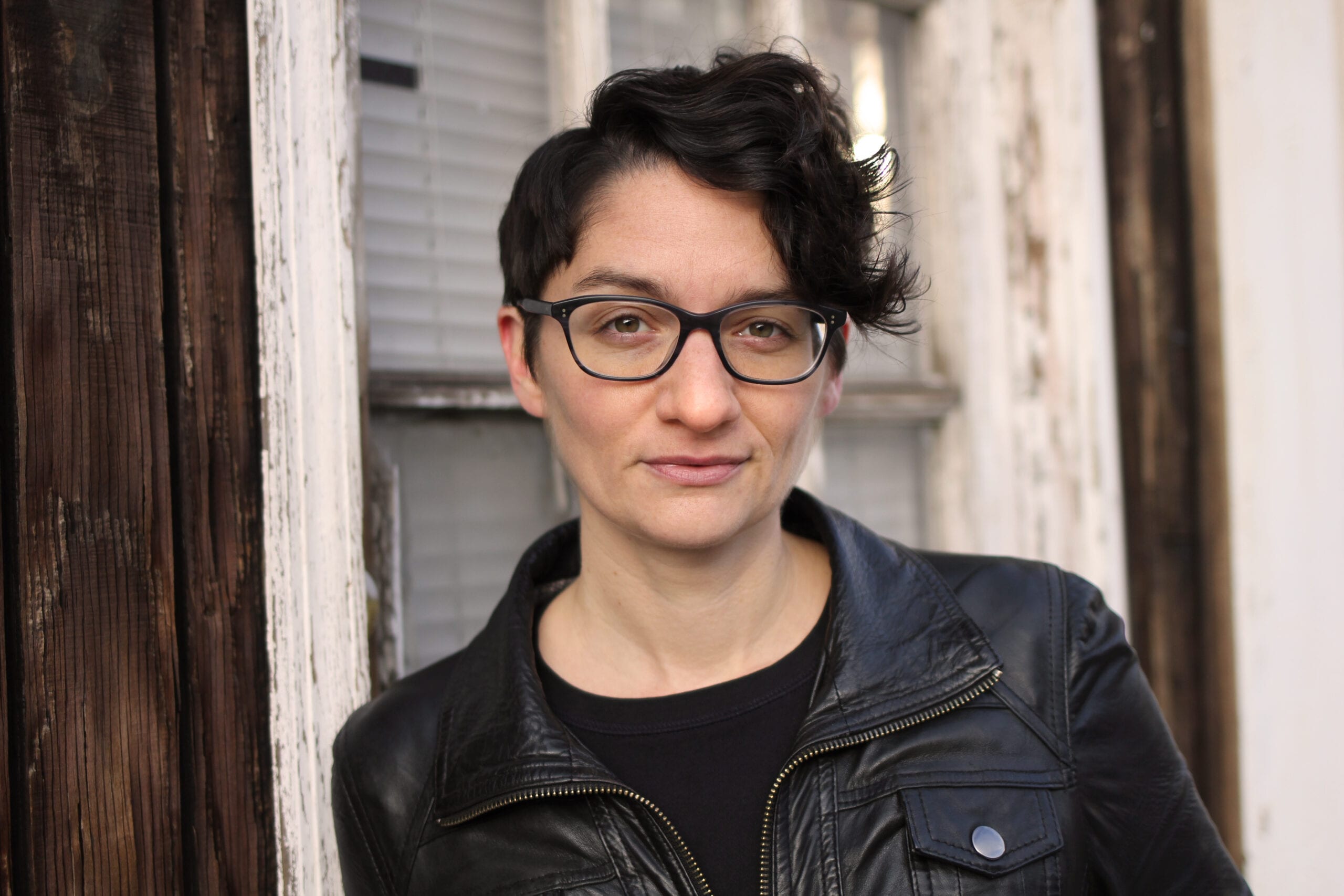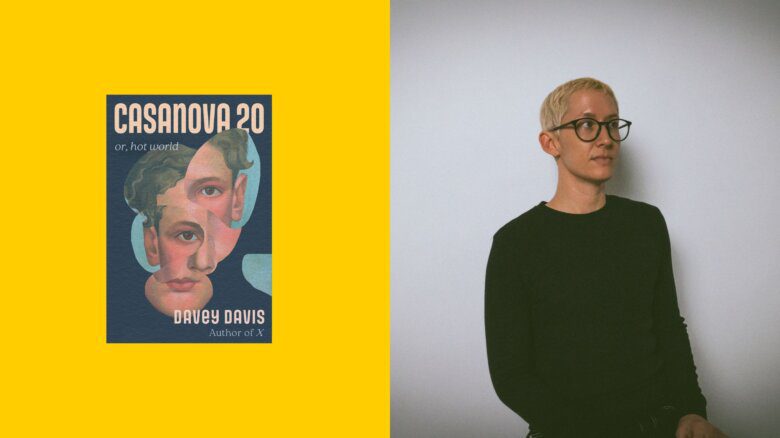What does it mean to be a tomboy? In her debut collection, Tomboyland, New York-based writer Melissa Faliveno explores the intersections of her identities to tackle our conceptions of gender. Born and raised in working-class Wisconsin, Faliveno grapples with place and identity: How does space affect and challenge who we are? In the below excerpt, Faliveno recalls a childhood uncomfortably bound by the gender binary and an emerging understanding of womanhood in a place she calls Tomboyland.

Credit: Courtesy Topple Books
Growing up, I was a tomboy. It’s what people called me and what I eventually started calling myself. At first, I resisted the word: I knew when people called me tomboy it was meant to call out my difference, that it set me apart from the other girls in my small midwestern town. And back then, I didn’t want to be different. On more than one occasion I recall my small self, fists on hips, insisting, “I’m a tomgirl,” and campaigning to get the word to stick. But I also secretly loved the word boy attached to me. I played with the boys and acted like a boy. I fought and spat and swore and yelled, climbed trees and built forts and splashed in the mud. I played sports and rode bikes and banged up my knees. I hated anything deemed girly, rejected dresses and dolls and the colour pink. When I was in second grade, I insisted my mother let me cut my hair short and spiky, like all the other boys. (After weeks of begging she relented, with the caveat that I leave it long in the back. She cut around my ears and I sculpted my spikes with gel, the rest of my hair cascading down my back, the first of several horrible mullets.) On a deeper level, I often felt like a boy. I often wished I was a boy. Sometimes I even prayed to be a boy, pleading with a God I wasn’t even sure I believed in that I might wake up the following day and everything would be different. Being a girl made me angry. It felt like a curse to be a girl, a cruel injustice that I had to be anything other than a boy. I fought with the boys who called me girl and with the girls who called me boy. On the school bus, when the older boys called me beast and spat in my hair, I spat back. I plucked the head off the only Barbie I owned, her impossibly proportioned and headless body serving as the one thing I understood a woman’s body to be: the object of male desire. Alone in the bathtub, I smashed the green muscled bodies of my Teenage Mutant Ninja Turtles action figures against the smooth pale skin of my headless plastic woman. In my childhood fantasy, she fulfilled the role of girlfriend to Leonardo, the manliest hero of the sewer-dwelling mutant quartet. Their romance was always narrated from Leo’s perspective, his repressed sexual energies expended deep below the surface of the water, among the bubbles, out of sight even from me. One day, at the Montessori school I attended for preschool and kindergarten in my small Wisconsin town, my friends and I played outside in the sun. It was hot, and the boys ran around with their shirts off. So I took mine off too. “Girls need to wear their shirts, Melissa,” a teacher said. Instead of putting my shirt back on, I climbed to the roof of the school. I have no idea how I got there, but in my memory there I stand, shirtless and defiant, bare feet on the hot slate shingles, waving my T-shirt triumphantly in the air and refusing to come down. In one version of the memory, I whip the shirt above my head like a lasso and launch it to the ground, laughing maniacally at my own dissidence. However it happened, what I know for sure is, at least for a little while, I stayed there—a veritable boy of summer, bare chested in the sun.
The word tomboy has a complicated past. First recorded in the mid-16th century, it was used to describe a “rude and boisterous” boy. By the 1590s, it had become a slur used against “a wild, romping girl who acts like a boy” or, more commonly, a “strumpet, a bold or immodest woman.” It was wielded, in particular, at girls of lower classes who behaved in ways deemed unladylike, classless and vile. By the mid-1800s, tomboy became more than a word; it defined a code of conduct used as a way to encourage a more active lifestyle in young girls. While this might seem wholesome on the surface, the subtext was sinister. As Michelle Ann Abate writes in Tomboys: A Literary and Cultural History, when slavery was abolished in the United Kingdom, upper- and middle-class white families grew concerned that the white race would become the minority. The patriarchy encouraged girls to run and play and live more like boys, to eat a healthy diet, to exercise. Ultimately, to move away from the Victorian ideal of the “fair lady”— the frail, thin, pale, and inactive girl—and toward a robust, active one was a way to ensure that girls would be healthy enough to procreate, thus keeping the kingdom’s white-majority status strong. This, too, was true in the antebellum United States: Combined with declining birth rates among upper- and middle-class whites and the decreasing vitality of the children they did produce, the abolition of slavery and an influx of immigrants led many white people to fear that a potential “race suicide” would soon be underway, and they would become the minority in the United States. Tomboyism among white American girls offered a solution. It was specifically encouraged so that girls would become vital, healthy, childbearing adults—so that, ultimately, they would become mothers. And what began as a word to deride those who bucked traditional expectations of femininity became, in essence, a way to perpetuate it.
“Not every tomboy grows up to be queer, of course, but a lot of us do”
Tomboy has, of course, adopted a less racist, less heteronormative and more inclusive meaning since then. It is typically used to describe girls who act or dress in a masculine fashion and is often associated with early identity development among queer women. Androgynous clothing companies claim the word as a banner of pride, and queer communities have embraced it as a word to describe not just an appearance but an identity. Some research suggests a correlation between girls who identify as tomboys and those who grow up to identify as queer, trans or non-binary. Not every tomboy grows up to be queer, of course, but a lot of us do.
In rural spaces, girls grow up on the land. We play in the fields and the forest; we climb trees; we help our families garden and farm; we join the Future Farmers of America or the 4-H Club or the Girl Scouts, where outdoor skills are encouraged and honed. Where I come from, women are strong. We’re built like barns, built to work. We might look more masculine, not least because we tend to do more traditionally masculine work. This is true of many of the women in my family—including my late grandmother, my mother and several of my aunts—almost all of whom have worked factory jobs or service jobs or both. I worked these kinds of jobs too. I started working when I was 12, helping my parents take inventories of rural gas stations; crouched on our hands and knees in small dusty convenience stores across the state, we counted everything on the shelves by hand. My parents, who are now in their late 60s, still do this work. As a teenager, I worked on the floor of a discount clothing store—work both my parents did for much of their lives—and as a waitress and bartender at a pub in my hometown. I tended bar and waited tables in college too, and later worked as a barista, to pay my way through school.
“When I think of the rural Midwest, I think of it as a place where a girl’s body is uniquely connected to the land in which she was born”
I was the first in my immediate family to get a degree. Where I come from, we don’t necessarily go to college. We might not have the money; we might not have the interest. We might have a family farm or business to take over; we might develop a skilled trade instead. We might join a union and stay in it for life. If we do go to college, we might go to technical and two-year programs for such trades. And we dress and present in a way that makes those jobs more efficient. Middle-aged and older women in particular tend toward the androgynous, with close-cropped hair and functional, less-than-fashionable clothing. (The slow cross-country crawl of fashion is a factor in this too. Not only do trends make their way to the flyover states at a snail’s pace—a realization I made when I moved to New York, in 2009, and didn’t own a single pair of skinny jeans—but sometimes they never make it at all. And if they do, few rural Midwesterners have the money or time to care.) It’s no wonder when people think of the tomboy, they often think of a Midwesterner, of a boyish little girl running around the prairies of Middle America like Laura Ingalls Wilder. They think of a farmer, of a woman in coveralls fixing a faucet. They think of a bartender, serving Miller Lite to construction workers at happy hour. Tomboys exist in other parts of the country, of course, in rural and urban spaces alike, as do women who work backbreaking jobs that keep them on their feet all day. But when I think of the rural Midwest, I think of it as a place where a girl’s body is uniquely connected to the land in which she was born: where girls hunt and fish and fight and don’t always shed their masculine characteristics as they get older. When I think of the Midwest, a place whose boundaries and borders are contentious, a place given so many different names—from the Great Plains to the Great Lakes states to the Upper Midwest—I think of a place that transcends boundaries, that defies definition, a body that holds within it a multitude of identities. When I think of my Midwest—the heartland, the hinterland, a place of farmland and factories, of forests and rivers and lakes—I think of it as Tomboyland.
Excerpt from TOMBOYLAND by Melissa Faliveno, published by TOPPLE Books & Little A on August 1, 2020, and reprinted under a license arrangement originating with Amazon Publishing, www.apub.com. Copyright © 2020 by Melissa Faliveno.
Tomboyland is now available on Amazon in the U.S and Canada.

 Why you can trust Xtra
Why you can trust Xtra


